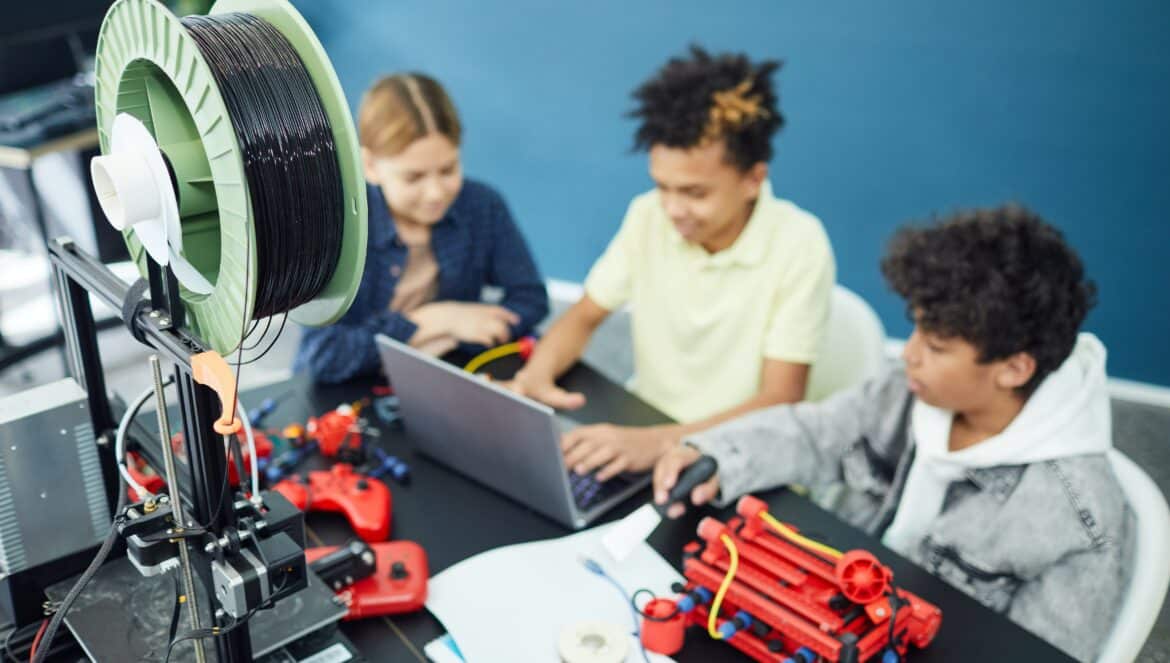Adopting an agile mindset in the classroom means trusting teams to organize and complete work in rapid iterations. To truly implement this framework, use student self-selected groups to develop student-led projects. For real learning to occur, there must be student agency, and this is the first step.
Having students, led by team captains, self-select their team is a tenant of an agile classroom. It is essential that students understand their power of choice, teamwork, and communication. When beginning a unit with choice and trust in student decisions, the impact is immediate. Students are engaged, nervous, and excited by the idea of having agency in their learning. They immediately know this is not the “game” of education but a different dynamic that they are not used to.
This task of choosing groups is not to be taken lightly. Successful student groups make or break a learning experience. When given choice with no parameters, students do not have the tools or strategies to choose teams that will excel and resort to working with friends. The foundation of an agile classroom is to explicitly teach the skills students will need to lead and develop a passion for learning.
There is a foundation that must be taught before students are ready to pick teams that they will work with for 4 – 6 weeks. This usually begins with a discussion or writing prompt about how each individual learns best. It is clear that all people do not learn the same. We are individuals that function in unique ways. For most students, this is the first time they will have this discussion in an educational setting. This reflective exercise helps students explore their own cognitive practices. Through probing questions and a lively discussion, their individuality shines as they come to the conclusion that they all have strengths and weaknesses in all aspects of their lives. This can be cemented in learning journals, where students reflect on how they learned best that week, or weekly retrospectives, where the class discusses their individual successes for impediments and how improvements in the future. This base of meta-cognitive practices enables students to take the next leap into better understanding team dynamics.
At the beginning of a new unit, the teacher chooses team captains. There is no magic formula for the selection process, but a promise to the students that, at some point, each person will serve as a captain.
Each student is then given a Qualities and Skills checklist. Students are instructed to select the top five qualities and skills. The important part of this process is to keep these sheets anonymous, so students are forced to analyze the attributes of each individual over who they are. Each paper is assigned a number that corresponds to a student on the teacher roster. Only the teacher has access to both. Students could only see the number on top of each checklist as go through the process of choosing well-rounded groups rather than groups of friends.
Prior to the selection, the class should discuss what makes groups successful. Should we all be creative? detail-oriented? a leader? These are all great characteristics, but can so many different skills weaken the overall strength of the group? Should our teams be like-minded or diverse? What outcomes should be anticipated from our groups?
From years of forced group work, students have strong opinions about how teams should work. They are opinionated and offer perspectives on working with others that are insightful. By giving them space to work through these thoughts together, they are able to gain a deep level of clarity about how to build teams. A skill that will aid them in their futures.
Team captains are given access to the groups of qualities and meet to pick those that they think would build the best group. Since the captains chose solely on qualities and skill, they have no idea who is in their group. Team Captains return to their teachers only with numbers, anxious to hear who is in their groups.
Students have described this as nerve-wracking. They are not used to making decisions in the classroom, never mind decisions that will greatly impact the next few weeks of their lives.
When groups are formed, students may try to figure out who listed what skills. Often times you can overhear conversations about dividing work based on who has what qualities.
In self-selected groups, students are proud to be chosen for their strengths and not reputations or names. Each person is valued because of what they can contribute to the success of the group.
The practice of self-selected groups teaches students to value diverse teams and look for the strengths in others. It is a practice that goes beyond teaching a traditional curriculum but the real-life skill of working with others to accomplish complex tasks. It builds empathy and communication skills all people need to be successful throughout life.

